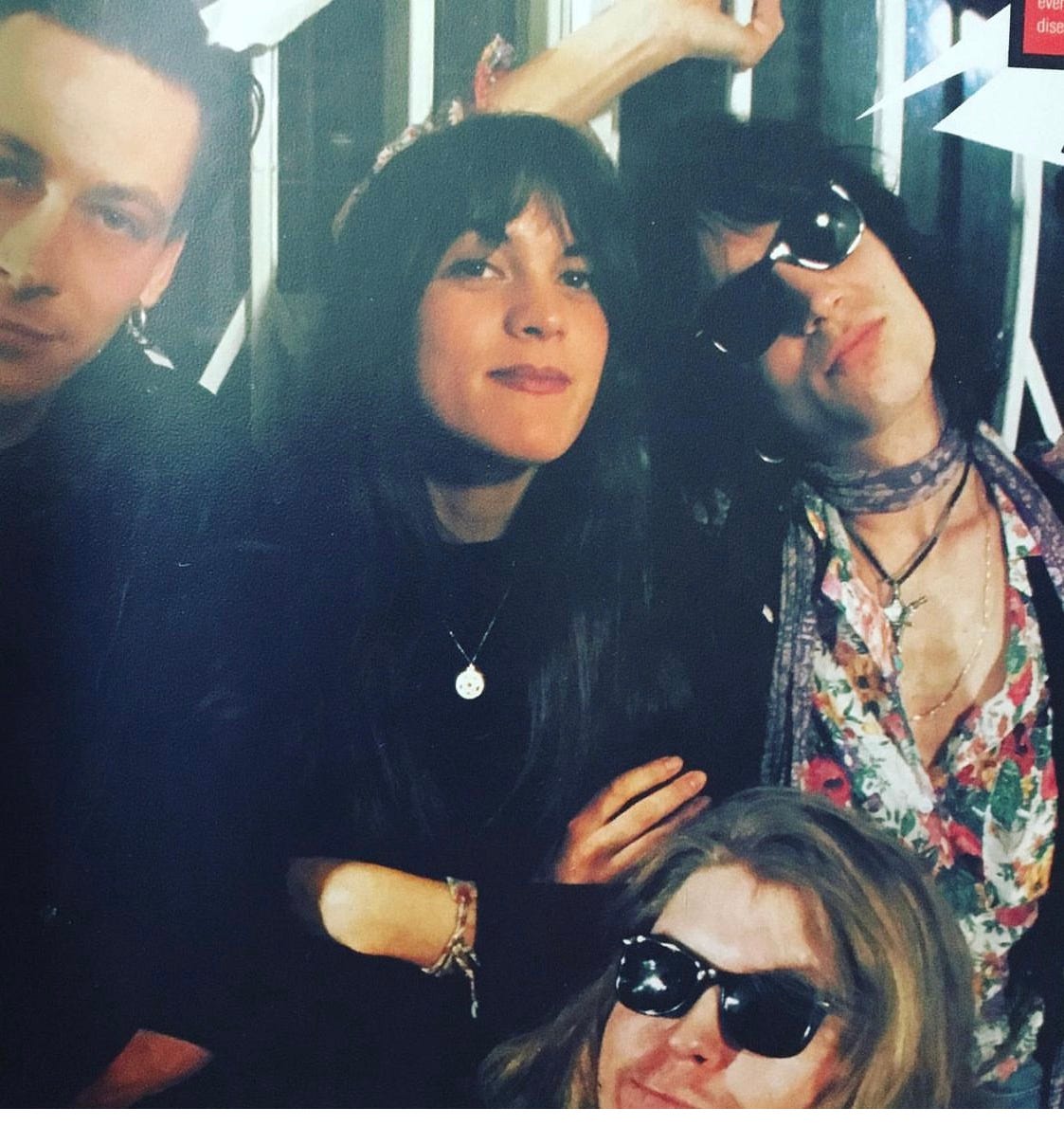
Too Pretty for Words. Apparently.
Back in 1991, when I finished speaking with Courtney Love for The Guardian, she told me I gave “good interview”. Apparently, this had come as a surprise to her because, based on my looks, she said she hadn’t expected me to be capable of asking decent questions. She said she’d thought I wouldn’t be able to “give good interview” because I was “pretty”. I think she meant this as a compliment. We’d had a great conversation and discovered all sorts of shared feminist interests. But inwardly, I was taken aback. This wasn’t the kind of comment I’d expected to receive from another woman.
By now, I had been a highly successful rock journalist for three years. I had already toured with, reviewed and interviewed countless rock bands, including Nine Inch Nails, Smashing Pumpkins, Red Hot Chili Peppers, Faith No More, Ministry, and Motorhead. I was virtually the only woman writing about the likes of Mudhoney, Nirvana, and Soundgarden and later, for a while, would become the only journalist in the world who Pearl Jam’s Eddie Vedder would speak with. Around the same time, I would be in a similar position with Courtney, but this went badly wrong, thanks to a pair of tabloid-minded male editors who headed up one of the UK’s more salacious music monthlies.
These editors basically destroyed my relationship with Kurt Cobain as well as Courtney, by lying to me, lying to Courtney, butchering my interview, and printing a load of unsubstantiated claims that neither she nor I had made. Whatever I would come to think of Courtney Love in later years, apparently, the words I had written, the quotes I had garnered from giving pretty darned good interview to her in 1992, were not enough.
It’s worth mentioning here that the older one of the pair, the editor-in-chief guy, once said he didn’t think women were able to write about music. The fact that he continues to hold sway in the world of music journalism with his podcast makes me shudder.
As a female rock journalist in the 1990s, I withstood a fair amount of shit from musicians and tour managers, but the worst of it came from male editors and other writers, one or two of whom, sadly, were women. Don’t get me wrong. I was living the dream. I remember pinching myself on many occasions, including my three weeks in Seattle in 1990, and the time I watched the sun rise over Chicago, drinking margaritas with my photographer while on the road with Alice in Chains and Screaming Trees for the NME. But there was often a flipside - and in the case of the NME, it was very much a case of insufferable male arrogance. (One writer even asked me if I’d like some ‘help’ with my Riot Grrl feature….)
I’ve been sitting on these stories for years and am now hoping to write a memoir. Other women’s accounts have encouraged me, including Viv Albertine’s Clothes, Clothes, Clothes. Music, Music, Music. Boys, Boys, Boys, my friend Miki Berenyi’s Fingers Crossed: How Music Saved Me From Success (I was a Beta reader for an early draft), and in particular, Tracey Thorn’s My Rock’n’Roll Friend. I was actually frightened of reading Tracey’s book, because I knew it would hurt. And it did. It made me want to laugh, scream, cry, shout, and hurl my copy across the room because so much of Lindy Morrison’s unfair and unjust experience resonated with me. But more than that, the book provided me with inspiration. It invited me to recover my voice and helped me realise that what I had to say was valuable and worthwhile.
Courtney herself has recently commented on the ways in which women have been written out of rock history, but it’s not just performers and musicians who’ve been impacted. It’s writers too. Granted, there are now plenty of great female music journalists, but it’s taken years for the music press to acknowledge and respect women enough to even consider integrating them properly, and there’s still a huge, glaring gap in the history of rock reportage, with many of us having been disappeared in the interim. I actually curated an anthology of rock writing by women in 1997, but the publishing company were sold as it was released, so it was lamentably passed over. But just for the record, it contained an amazing roll call of names including Emma Forrest, Sheryl Garratt, Miranda Sawyer, Sylvia Patterson, Barbara Ellen, and Sylvie Simmons among others.
Female Rock Journalist is my attempt at setting the record a little bit straighter. It feels like something of a creative experiment at this stage, a sort of mix-tape of old work, new reviews (books and screen), and current thoughts and musings. Hopefully, there’ll be some conversation starters. And all being well, it’ll help me coalesce some ideas for the memoir.
If you’re curious about women and music, please read on, and spread the word. I’ve decided to keep things free for now, as I’m too busy to post as regularly as I’d like to, but that might change at some point. Writers don’t get paid enough as it is… And in my entire time as a music journalist, my rates never went up once.
Thank you so much for joining me!



